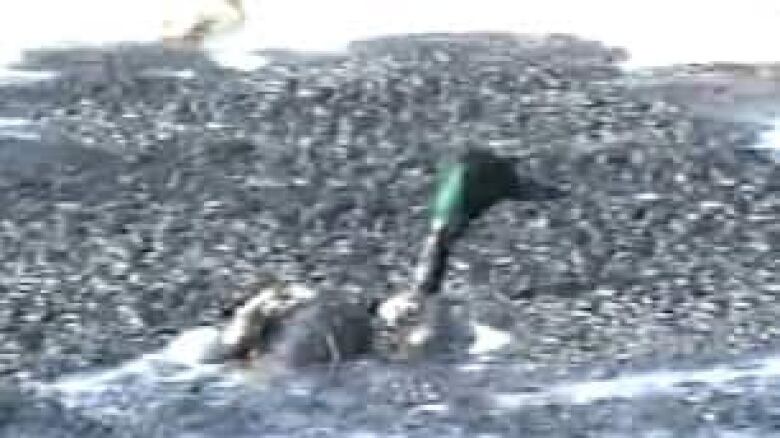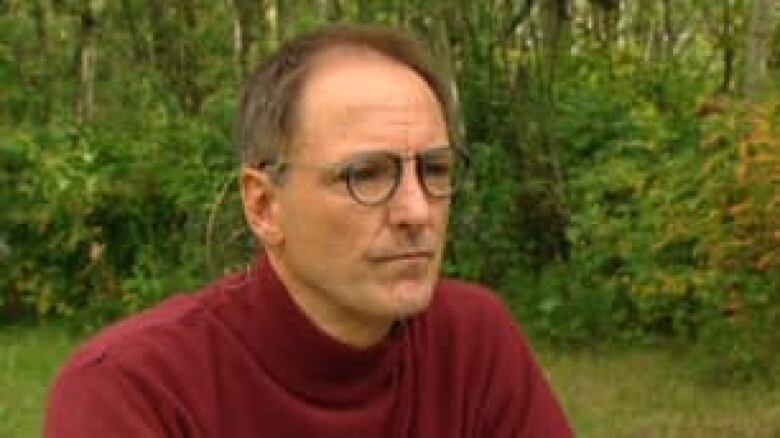Oil industry lowballs bird deaths: study
Annual death rate related to tailings ponds at least 30 times higher, ecologist says

The results add weight to arguments that depending on theindustry to monitor its own environmental impacts isn't working, said Kevin Timoney, an ecologist who co-authored apaper on the subject with Dalhousie University biologist Robert A. Ronconi.
The paper was published Tuesday in the Wilson Journal of Ornithology.
"We need to have credible scientific monitoring," said Timoney, who is based at the firm Treeline Ecological Research.
Bird deaths are currently trackedby industry employees, whoreport the number ofcarcasses found. Using that method, the industry reported that on average, 65 birds died each year fromtailings pond exposure in northeastern Albertabetween2000and 2007.
"It's basically ad hoc," said Timoney, who decided to take a different approach for the tailings ponds of Suncor, Syncrude and Shell.

The surveys were combined with studies looking at how many birds out of the total number that flew over actually landed and were "oiled" on the tailings ponds.
Timoney then factored in reports of bird deaths obtained from the Alberta government through freedom-of-information legislation.
Using averages for the mortality rate of oiled birds and adjusting for the increased size of tailings ponds over the last two decades, Timoney came up with what he says is a more reasonable estimate for bird deaths in the 120 square kilometres of ponds he studied.
1,973 deaths a year
The 14-year median, including raptors, songbirds, shorebirds and gulls, is 1,973 deaths every year, although the deaths for any given year ranged from 458 to 5,029. That's more birds than died in the April 2008 incident that saw Syncrude convicted of charges under the Wildlife Act earlier this year.
And the actualtotal is probably higher than that, said Timoney. His study, which was funded by Dalhousie University, didn't account for birds that landed and were oiled at night or that simply sank under the surface of the ponds.
The total mortality is unlikely to have much overall impact on the millions of birds from dozens of species that migrate through the Athabasca watershed, one of the continent's main flyways.
However, Timoney pointed out, some populations, such as endangered whooping cranes, are vulnerable to a single catastrophic event. As well, oiled birds that escape take the contaminating materialswith them to their summer or winter habitat.
Government should monitor: researcher
Timoney said the disparity between official estimates and his results is disturbing.
"Industry-reported data on bird deaths are problematic as they are not systematic, repeatable and statistically robust," the paper says. "Government should assume responsibility for development of systematic monitoring and research on tailings pond bird landing, oiling and mortality rates."
Alberta Sustainable Resource Development Minister Mel Knight points out that oilsands operators are required to have deterrence and monitoring systems in place for all kinds of wildlife. But he acknowledges there's room for improvement.
"I would not argue at all with the study with respect to the fact that there could be better work done on monitoring, and we're going to work to do that," he said. "At the end of the day, we'll come to appreciate the advice that is being given to us, and we'll use it."
Alberta Premier Ed Stelmachdefended his government's record on bird mortality rates.
"I stand by what we are doing. We're constantly improving, trying to reduce bird mortality, in the oilsands, and this is with respect to our tailing ponds," he said.
"When we get into dry tailing ponds, I'm sure that we won't have any of the same issues we have with bird mortalities today."
Timoney's is not the first independent study to question official figures on the environmental impact of the oilsands.
Last December, one report suggested hydrocarbon emissions are nearly five times greater and twice as widespread as industry figures say. Another suggested that tailings leakage from storage ponds is also underestimated. A third suggested that if deforestation and wetlands removal are considered, greenhouse gas emissions from oilsands development are about 25 per cent higher than government and industry say.
Greenpeace Canada championed Timoneys study.
"Last week we learned from one of Canada's most respected scientists that government and industry claims around toxins in the Athabasca River are completely false. This week, we learn from Dr. Timoney, another respected scientist, that actual bird deaths from toxic tailing lakes are at least seven to 77 times higher and possibly substantially higher than industry has reported," Mike Hudema, the agencys climate and energy campaigner said in a statement.
"We can no longer let the fox guard the hen house. It has become glaringly obvious that we can't trust the government to give us accurate information on the [oilsands] industry."
With files from CBC News












_(720p).jpg)


 OFFICIAL HD MUSIC VIDEO.jpg)
.jpg)



























































































